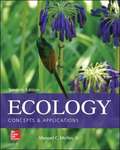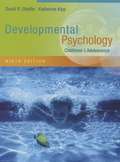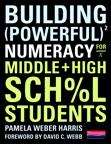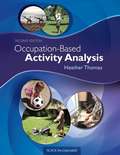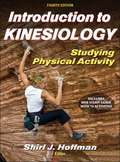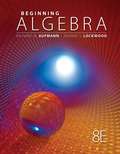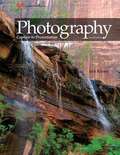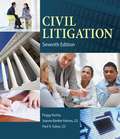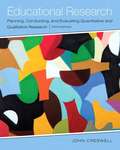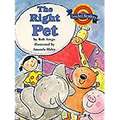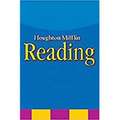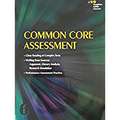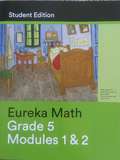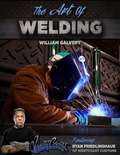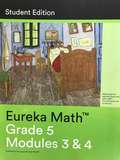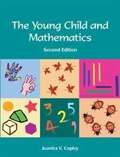- Table View
- List View
From Bacteria To Plants
by Michael J. PadillaA science textbook by Michael J. Padilla. Part of the series: "The Nature of Science and Technology" The Nature of Science and Technology, introduces students to the sciences, scientific methods, skills, and technology and design concepts they'll need to succeed in middle grades science.
Ecology: Concepts And Applications (Seventh Edition)
by Manuel C. MollesEcology: Concepts and Applications by Molles places great emphasis on helping students grasp the main concepts of ecology while keeping the presentation more applied than theoretical. An evolutionary perspective forms the foundation of the entire discussion. The book begins with the natural history of the planet, considers portions of the whole in the middle chapters, and ends with another perspective of the entire planet in the concluding chapter. Its unique organization of focusing only on several key concepts in each chapter sets it apart from other ecology texts. Users who purchase Connect Plus receive access to the full online ebook version of the textbook.
Exploring Science 1: Student Edition
by National Geographic Learning Cengage LearningThis student edition covers 100% of Grade 1 Next Generation Science Standards. Features: Focus in-depth on 100% of the NGSS for grades K-5. Introduce real-world science research with National Geographic Explorers, scientists, and photographers. Connect NGSS content with investigations, engineering practices, and case studies for complete NGSS emersion. Can be combined with National Geographic Science for the most complete NGSS solution available
Developmental Psychology: Childhood And Adolescence (Ninth Edition)
by David R. Shaffer Katherine KippThis popular, topically organized, and thoroughly updated child and adolescent development text presents you with the best theories, research, and practical advice that developmentalists have to offer today. Authors David R. Shaffer and Katherine Kipp provide you with a current and comprehensive overview of child and adolescent development, written in clear, concise language that talks "to" you rather than "at" you. The authors also focus on application showing how theories and research apply to real-life settings. As a result, you will gain an understanding of developmental principles that will help you in your roles as parents, teachers, nurses, day-care workers, pediatricians, psychologists, or in any other capacity by which you may one day influence the lives of developing persons. Available with InfoTrac Student Collections http://gocengage. com/infotrac.
Building Powerful Numeracy For Middle And High School Students
by Pamela Weber Harris David WebbSolid research at the elementary level shows how to help all students become mathematically proficient by redefining what it means to compute with number sense. Pam Harris has spent the past ten years scrutinizing the research and using the resulting reform materials with teachers and students, seeing what works and what doesn't work, always with an eye to success in higher math. This book brings these insights to the secondary world, with an emphasis on one powerful goal: building numeracy. Developing numeracy in today's middle and high school students is reflective of the Common Core State Standards mission to build "the skills that our young people need for success in college and careers. " (CCSS 2010) Numeracy is more than the ability to do basic arithmetic. At its heart, numeracy is the ability to use mathematical relationships to reason with numbers and numerical concepts, to think through the math logically, to have a repertoire of strategies to solve problems, and to be able to apply the logic outside of classrooms. How can we build powerful numeracy in middle and secondary students? Harris's approach emphasizes two big ideas: Teach the importance of representation. The representation of student strategies on models such as the open number line, the open array, and the ratio table promote discussion on relationships rather than procedures Teach with problem strings. Introduced by Catherine Twomey Fosnot and her colleagues in the Young Mathematicians at Work series, problem strings are purposefully designed sequences of related problems that help students construct numerical relationships. They encourage students to look to the numbers first before choosing a strategy, nudging them toward efficient, sophisticated strategies for computation. Understanding numerical relationships gives students the freedom to choose a strategy, rather than being stuck with only one way to solve a problem. Using the strings and activities in this book can empower your students to reason through problems and seek to find clever solutions. They'll become more naturally inclined to use the strategies that make sense to them. Students become engaged, willing to think, and more confident in their justifications. When we give secondary students this numerical power, we also help them learn higher mathematics with more confidence and more success.
Occupation-Based Activity Analysis
by Heather ThomasOccupational therapists use occupations and activities as not just a goal, but also as a treatment medium, therefore, they must understand both the uniqueness of a client’s occupations and how an activity can be used therapeutically. To analyze the complexity of an occupation takes much more depth of understanding of the person engaging in it, his or her environment, and the uniqueness of the occupation a person has chosen. <p><p> The new Second Edition of Occupation-Based Activity Analysis continues the tradition of teaching students and clinicians the process of conducting activity analyses and occupation-based activity analyses. <p> Dr. Heather Thomas has updated Occupation-Based Activity Analysis, Second Edition to reflect the significant changes made to the activity analysis process and terminology in the Occupational Therapy Practice Framework, Third Edition. As in an activity analysis, occupation-based activity analysis looks at what is required for full participation, yet goes beyond analyzing the activity; it looks at what it means for the person engaging in it and how and where it is performed by that person. <p> Inside Occupation-Based Activity Analysis, Second Edition, each chapter is dedicated to a component of the activity analysis process and corresponding section of the Framework. Chapters have been restructured based on a greater emphasis on occupation-based activity analysis. From start to finish, readers are guided through identifying the occupation, sequence and timing, objects and properties, space and social demands, body functions, and structures and performance skills required.
Introduction to Kinesiology: Studying Physical Activity
by Shirl J. HoffmanIntroduction to Kinesiology: Studying Physical Activity, Fourth Edition, is the most cohesive introduction to the field of kinesiology available, demonstrating how its many disciplines integrate into a unified body of knowledge. This all-inclusive approach gives students a solid background in the field and prepares them for further study and course work. This engaging and jargon-free text also introduces students to job prospects and areas of study and professional practice in kinesiology. Introduction to Kinesiology, Fourth Edition, orients and prepares students for in-depth studies in their areas of interest. Its broad scope acknowledges students' diverse interests and aspirations in professional and scholarly career tracks as well as teaching and coaching. Top kinesiologists expand discussion of physical activity beyond exercise, sport, or health-related activity in an effort to broaden conceptions of physical activity and the potential contributions of kinesiology. The contributors, each with specific expertise in the subdisciplines, share their perspectives in chapters complemented by full-color photos and illustrations.
Holt Science And Technology: Human Body Systems and Health
by Holt Rinehart WinstonMiddle School Science Textbook
Introduction to Chemistry interactive SCIENCE
by Don Buckley Zipporah Miller Michael J. PadillaMiddle Grade Science Textbook
Beginning Algebra, Eighth Edition
by Richard N. Aufmann Joanne S. LockwoodIntended for developmental math courses in beginning algebra, this text retains the hallmark features that have made the Aufmann texts market leaders: an interactive approach in an objective-based framework: a clear writing style, and an emphasis on problem-solving strategies
Photography: Capture To Presentation
by Jack KlaseyDesigned for use as a first course in the basics of photography, focusing on the application of photographic principles to the field of digital imaging. The text provides a solid knowledge base for the student, covering the essential tools and techniques of photography. Emphasis is on color digital photography to permit concentration on basic skill development, but film cameras and developing techniques are also included. The textbook includes the use of image-editing software and the "digital darkroom", with practical examples of techniques for correcting, enhancing, and creatively manipulating images. After learning the fundamentals, the reader learns about photography situations such as action and event photography, outdoor photography, travel photography, and portrait and studio photography.
Civil Litigation Seventh Edition
by Peggy Kerley Joanne Banker Hames Paul A. SukysSucceed in your role as a paralegal with CIVIL LITIGATION, Seventh Edition. Practical, easy-to-understand, and thoroughly up-to-date, this proven book helps you grasp the details of today's litigation practice, covers the litigation process in a range of contexts, and demonstrates the relationship of litigation to other legal specialties. Each chapter includes exercises focusing on two cases, giving you the opportunity to work the cases from beginning to end, simulating an on-the-job experience. You'll also find sample documents (such as complaints, answers, interrogatories, and deposition summaries) that familiarize you with the documents you will encounter in the litigation law office.
Educational Research: Planning, Conducting, and Evaluating Quantitative and Qualitative Research
by John W. CreswellEducational Research: Planning, Conducting, and Evaluating Quantitative and Qualitative Research offers a truly balanced, inclusive, and integrated overview of the field as it currently stands. This text provides thorough coverage of the methods and procedures used in quantitative, qualitative, and mixed-methods research. It helps students learn how to begin to conduct research and see a project through preparation of a manuscript, and it also helps students learn how to read and evaluate research reports.
The Art Of Welding
by William L. Galvery Ryan FriedlinghausRyan Friedlinghaus, the celebrated guru of automotive customization and host of West Coast Customs on Fox Sports, adds practical knowledge to William Galvery's acclaimed welding insight and everyday tips and tricks developed over his long professional career as an educator. This unique and original book improves upon the shortcomings of competitive titles by providing complete, in-depth coverage of the equipment and techniques used in the most popular welding processes: oxyacetylene, stick welding, MIG welding and TIG welding. What's more, it presents information in a lively, easy-to-follow design. Each chapter contains the pros and cons of each process and information on equipment, setup, materials, safety and welding techniques. To provide a solid footing for the novice welder, there is a chapter that provides an overview of welding and another on tools and materials. The bulk of the book is devoted to the more popular welding techniques. The authors also provide a chapter on soldering and brazing and another on plasma cutting. The Art of Welding is perfect for anyone who wants to learn welding, to make repairs or as part of a hobby. Even experienced welders will discover many tips and procedures to improve their welding technique. Features: Presents the accumulated experience and knowledge of two welding professionals. William Galvery provides insight to the proper use of equipment and the science behind welding, including how welding affects different metals. Ryan Friedlinghaus provides the tips and techniques he uses everyday at West Coast Customs. Offers in-depth information about all popular welding processes, step-by-step photos and an engaging design that will appeal to do-it-yourselfers and hobbyist who want a solid background in welding. Emphasis is placed on safety with sections on selecting the proper clothing and safety lens for welding. Each welding process includes tips on approaching the job in a safe manner. Contains troubleshooting guides offering users an opportunity to learn from their mistakes by comparing inadequate welds to the troubleshooting guides located throughout the book. A chapter on welding projects shows welders how to compensate for the natural distortion that welding causes to various metals
Turning Center Programming, Setup, and Operation Textbook: A Guide To Mastering The Use Of CNC Turning Centers
by Mike LynchIt is the intention of this text to introduce beginners and experienced CNC people alike to programming, setup, and operation techniques used to utilize CNC turning centers. We will begin in a basic manner, ensuring that even newcomers to CNC will be able to follow the presentations. And we use a building blocks approach -- so as you get deeper into the material -- we'll be adding to what you already know. When you're finished, you will have a thorough understanding of what it takes to program, setup, and run a CNC turning center. We use a Key Concepts approach to presenting CNC. The Key Concepts allow us to minimize the number of major topics you must master in order to become proficient with CNC turning center usage.
The Young Child And Mathematics (Second Edition)
by Juanita V. CopleyReflects recent developments in math education using vignettes from classrooms, activity ideas, and strategies for teaching young children about math processes and concepts. Incorporates standards and guidelines from NCTM and NAEYC.

